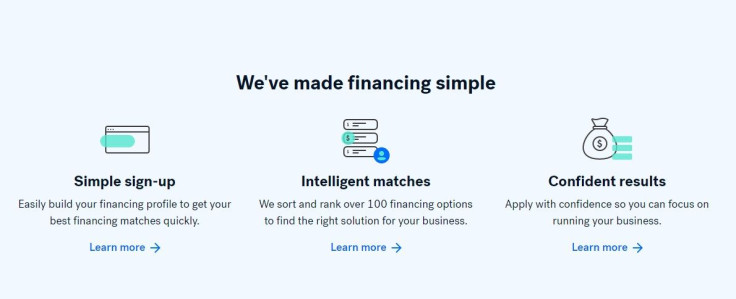6 Easy Steps To Get Small Business Loans & Credit Cards Quickly

Small businesses have been the worst hit due to stay-at-home orders, with hundreds of thousands shutting down since last year. Temporary closures have turned into permanent closures. However, small businesses that were able to survive don’t expect to return to pre-COVID levels any time soon. This means many businesses are dipping into their savings.
COVID-19’s impact on small business owners has left them struggling with income. While the funds originally needed were to grow the business, at present, it’s really just to stay afloat. Fortunately, the Small Business Association (SBA) is currently offering two loan programs to help businesses that were affected by COVID-19: the Paycheck Protection Program (PPP) and the Economic Injury Disaster Loan (EIDL).

If you're a business owner trying to get a small business loan in these uncertain times, it’s important to understand how you can qualify so you’re prepared to meet any criteria.
1. Check if you qualify for a loan
Credit score
To do this, you’ll first need to pay attention to the required credit score. Lenders vary in their requirements so it’s important to check with them or their site to see if you qualify. This lets them determine if you’ll be able to make the payments when the time comes. If you don’t know your credit profile, you can check with several credit bureaus, each one specializing in either personal or business credit reporting. But if you want to monitor your personal and business credit at the same time for free, we recommend getting a NAV account.
Cash flow
Lenders need to confirm if you can make payments periodically. Apart from your credit score, lenders will want an indication of your financial situation and if you have the ability to make payments. They will typically want to take a look at past sales, expenses and future reporting. Some may even want to take a look at unpaid invoices and at least three months’ worth of bank statements before they approve you for a loan, line of credit or even a business credit card.
Time in Business
Traditional lenders would require a few years of operation while online lenders may only require a year. Start-ups in their idea stage can have a difficult time qualifying for lenders, so a good option would be to apply for a business credit card instead.
Collateral
To secure a loan, you will be required to present collateral. This could mean allowing your business assets to be liquidated in case of non-payment or putting up your personal property to cover the loan. Whichever collateral you choose, you can go further in your application with something that’s tangible.
2. Decide on the type of loan
You’ll usually be asked by lenders what type of small business loan you’ll need. To determine this, you’ll need to set your objectives. Nav helps you do this by understanding your business, the industry you’re in and your financial needs. You don’t need to be an expert to discern which loan you’ll need but a better understanding of your goals will guide you to the loan that best suits you. Nav matches your business with the loan best suited for your goals and needs using real-time data. Try one of their plans here.

3. Decide on a lender
For small business loans, you’re typically offered three kinds to choose from depending on your business’ needs.
Online lenders
These are ideal for small businesses who lack collateral, lack time in business and need the funding ASAP. Online lenders provide loans and lines of credit ranging from $1,000 to $5 million with an annual percentage rate of 6% to 99%. These types of lenders usually have higher annual percentage rates compared to banks but have higher approval rates and faster funding release.
Traditional banks
These are ideal for small businesses that don’t need immediate funding, have been in business for at least two years and have good credit. You can apply for SBA loans through banks ranging from $500 to $5.5 million. Banks usually have the lowest annual percentage rate but funding can take longer and they can be strict with credit and revenue requirements.
Microlenders
These are ideal for companies that aren’t big enough to get a traditional loan. Microlenders are nonprofits that typically provide loans below $50,000. However, their annual percentage rates are also higher than bank loans and applications can be a tedious process, usually requiring a detailed plan of your business, financial statements and purpose of the loan.
4. Determine your chances of getting approved
You can be prequalified based on the initial information you provide but lenders will do a serious inquiry on your credit profile, so it’s important to filter your loan applications to lenders where you’ll most likely have success.
5. Collect your documents
Depending on the type of loan and lender, the list of documents needed can also vary, especially with more formal loans, including those offered through the SBA. Here are some of the documents you’ll be most likely asked for:
- Business and personal credit scores (note the bank will pull their own copies of these)
- Business bank account statements
- Tax returns and supporting IRS documents for both your business and personal tax accounts
- Any applicable licenses and registrations for doing business in your state
- Other financial documents deemed relevant (credit card sales, unpaid invoices and accounts receivable due to you)
- Any legal contracts that would be relevant (franchise, incorporation, leasing)
You may also need:
- Business forecast with details on future cash flow and costs
- Documentation of underserved representation (for loans aimed at women-owned businesses for example)
- Updated business plan with details on your growth and marketing strategies

6. Fill out the application
Take a look at a couple of options that are similar in terms of loan type and the ones that offer the lowest annual percentage rate. It’s important to consider the lowest annual percentage rate because these include all loan fees and interest rates so it’s a good determinant of the total loan cost.
Ensure that you get matched with a loan that's best suited for your small business using goals and real-time data through Nav. Subscribe to one of their plans here.











